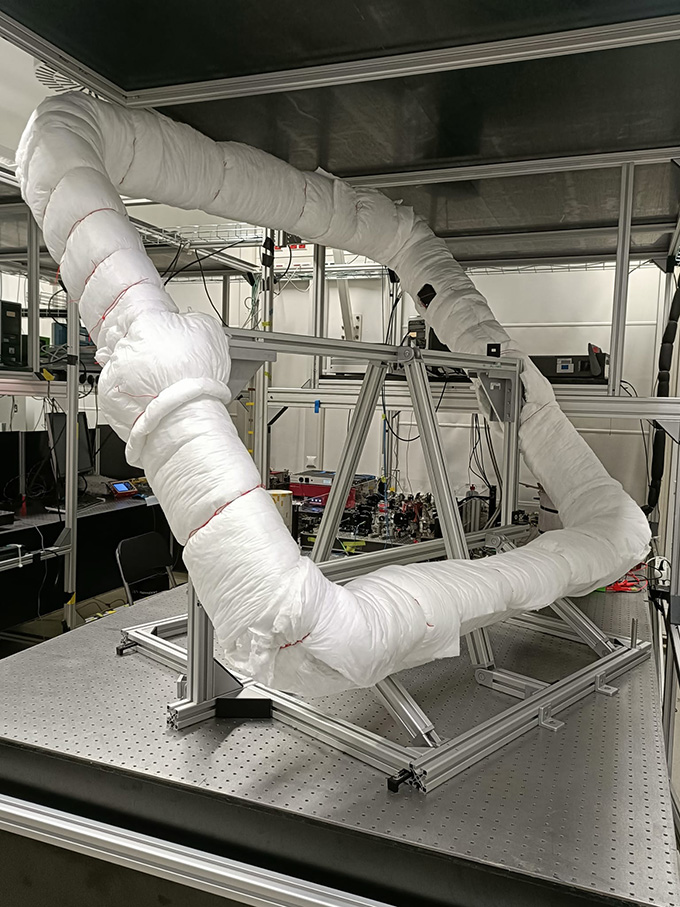Earth’s rotation has been measured many times over — but never like this. In a first, scientists used entangled quantum particles called photons to reveal the rate at which the globe spins.
The feat is a step towards probing one of the biggest mysteries of physics: how the tiny world of quantum physics interfaces with gravity.

Scientists send pairs of photons, particles of light, through a device called a quantum interferometer. Inside, the photons could traverse loops of optical fiber either clockwise or counterclockwise. The photons were entangled with each other, a type of quantum correlation that links the states of two particles. In this case, the entanglement meant the two photons took the same path. And rather than picking one direction or the other, the pair took on a strange state called a superposition, traversing a combination of the two paths.
Due to Earth rotating underneath, the two different paths corresponded to slightly different travel distances. That made the photons’ two superposed components slightly out of sync when they exited the labyrinth, causing quantum interference. Measuring that interference implied a rotation speed that agreed with Earth’s known rotation rate, the team reports June 14 in Science Advances.
Quantum physics doesn’t dovetail easily with physicists’ theory of gravity, general relativity, and scientists are struggling to understand how to combine them (SN: 1/12/22). “This experiment is a prototype for our next level of larger experiment,” says physicist Haocun Yu of the University of Vienna. With that experiment, “we want to explore the interface between quantum and gravity.”
#Physicists #measured #Earths #rotation #quantum #entanglement
Image Source : www.sciencenews.org